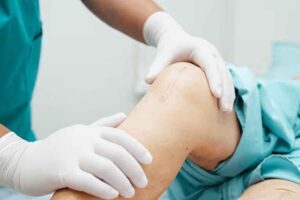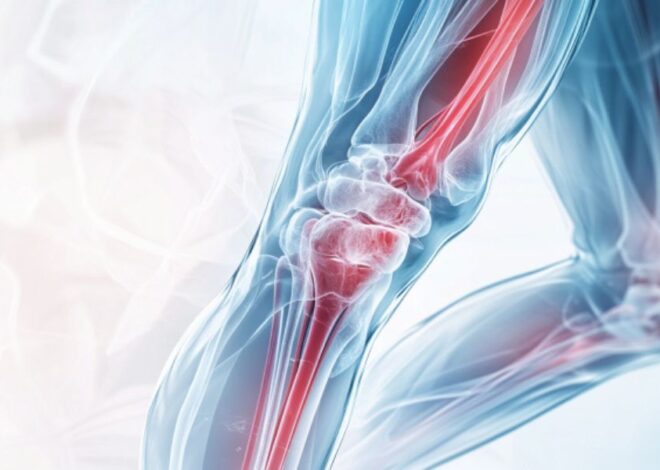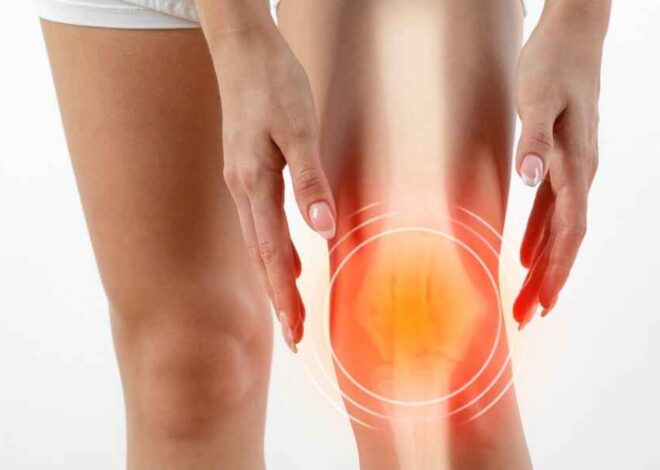
Nerve Pain After Knee Replacement Best Guide-2024
Last updated on December 6th, 2025 at 01:25 am
Knee replacement surgery has greatly improved and is now more tissue-sparing. This means that we no longer cut large muscles and tendons as we used to. As a result, there is less pain and a shorter recovery time. It also helps patients keep a knee that feels more natural. However, despite these advancements, nerve pain after knee replacement can still occur because the surgery techniques have not advanced to the point where we can avoid cutting all the nerves in the skin and tissue around the knee.
The knee has several major nerves and their branches that control the lower leg, ankle, foot, and toes, and send information from these parts to the brain. These include the saphenous, peroneal, tibial, femoral, and obturator nerves, some of which have multiple branches. Some of these nerves are located behind the knee, some on the sides, and some in the front. The skin around the knee is also filled with nerve endings, which can contribute to nerve pain after knee replacement.
After knee replacement or repair surgery, you might expect your pain to go away and your movement to improve so you can enjoy your favorite activities again. However, not everyone has the same experience, and some people might experience nerve pain after knee replacement instead.
Table of Contents
What is Nerve Pain?
Nerve pain, also called neuropathic pain, happens when nerves get damaged or don’t work properly. This kind of pain can be very hard to deal with because it usually doesn’t go away and can feel different in intensity and sensation.
Symptoms of Nerve Damage After Total Knee Replacement
Patients experiencing nerve pain after knee replacement may report various symptoms, such as:

- Burning Sensation: A feeling of burning pain in the knee area.
- Tingling: Sensations of pins and needles.
- Electric Shock Pain: Sudden, sharp, electric-like pain.
- Numbness: Areas around the knee may feel numb.
- Hypersensitivity: Increased sensitivity to touch.
- Chronic Pain: Persistent pain that doesn’t go away over time.
Detailed Explanation of Nerve Pain Causes
Surgical Trauma
During knee replacement surgery, the surgeon must cut through skin, muscle, and other tissues to reach the knee joint. This process can sometimes result in nerve damage. One specific nerve often affected is the infrapatellar branch of the saphenous nerve (IPBSN), which can be severed during the incision, leading to numbness or a painful neuroma.
Nerve Entrapment
As the body heals post-surgery, scar tissue forms around the surgical site. This scar tissue can sometimes entrap nerves, causing pain. Nerve entrapment can lead to symptoms like burning sensations, hypersensitivity, and pain during movement.
Compression
Changes in the knee’s anatomy during surgery can lead to nerve compression. For example, the common peroneal nerve, which runs near the fibula, can become compressed, causing pain and loss of function in the foot. Surgical decompression may be necessary to relieve this type of pain.
Inflammation
Inflammation is a natural part of the healing process, but excessive inflammation can irritate nerves. This can result in persistent pain, even after the surgical site has healed.
Risks of Severe Nerve Pain After Surgery
The risk of severe nerve pain after surgery is higher in older adults, those with genetic factors, women, and people with other health problems like diabetes or arthritis. Mental health issues like stress, anxiety, changes in thinking, or a drop in mental performance also play a role. Changes in thinking can lead to internal biases that make anxiety and negative thoughts worse. One type of thinking bias is called catastrophizing, where pain feels much worse than it is, making a person feel helpless in the face of pain or the fear of it. Depression, changes in thinking like catastrophizing, fear of movement (known as kinesiophobia), and poor coping skills are also risks for chronic nerve pain.
Managing Nerve Pain After Knee Replacement
Initial Steps
- Consult Your Surgeon: If you experience persistent nerve pain after knee replacement, your first step should be to consult your surgeon. They can reexamine the knee to ensure there are no structural issues.
- Second Opinion: Consider seeking a second opinion to confirm the diagnosis and explore additional treatment options.
What Helps Nerve Pain After Knee Replacement?
Several treatment options are available to manage nerve pain after knee replacement, including:
Medications
- Pain Relievers: Over-the-counter pain relievers like ibuprofen or acetaminophen can help manage mild pain.
- Nerve Pain Medications: Medications like gabapentin or pregabalin specifically target nerve pain.
- Topical Treatments: Creams and patches containing capsaicin or lidocaine can provide localized pain relief.
Physical Therapy
- Strengthening Exercises: Targeted exercises can help strengthen the muscles around the knee, reducing stress on nerves.
- Stretching: Gentle stretching can improve flexibility and reduce nerve compression.
- Manual Therapy: Techniques like massage and mobilization can relieve nerve entrapment and improve function.
Injections
- Corticosteroid Injections: These can reduce inflammation and provide temporary relief from nerve pain.
- Nerve Blocks: Injections of anesthetic near the affected nerve can temporarily “turn off” the pain.
Surgical Interventions
- Nerve Decompression: If a nerve is compressed, surgical decompression can provide relief.
- Neuroma Removal: In cases where a painful neuroma has formed, surgical removal may be necessary.
Lifestyle Modifications
Making certain lifestyle changes can also help manage nerve pain after knee replacement:
- Weight Management: Maintaining a healthy weight reduces stress on the knee joint and nerves.
- Healthy Diet: Eating a balanced diet supports overall health and can reduce inflammation.
- Regular Exercise: Engaging in low-impact activities like swimming or cycling can improve joint health without overloading the knee.
Alternative Therapies
In addition to traditional treatments, some patients find relief through alternative therapies:
- Acupuncture: This ancient practice can help alleviate pain by stimulating specific points on the body.
- Chiropractic Care: Adjustments can improve joint alignment and reduce nerve compression.
- Herbal Supplements: Supplements like turmeric and omega-3 fatty acids have anti-inflammatory properties.
Sciatic Nerve Pain After Knee Replacement
Sciatic nerve pain after knee replacement is less common but can occur. This type of pain may be due to changes in posture, muscle imbalances, or nerve compression. Patients may experience pain that radiates from the lower back to the leg.
What Helps Sciatica Pain After Knee Replacement?
- Physical Therapy: Strengthening and stretching exercises can alleviate sciatica symptoms.
- Pain Management: Medications and injections can help manage pain.
- Lifestyle Changes: Maintaining good posture and engaging in low-impact exercises can reduce sciatica symptoms.
- Alternative Therapies: Acupuncture and chiropractic care may provide relief.
How Long Does Nerve Pain Last After Total Knee Replacement?
The duration of nerve pain after total knee replacement varies. While some patients may experience relief within a few months, others may suffer from chronic pain lasting six months or longer. A healthcare professional should evaluate persistent nerve pain to determine the appropriate treatment.
How Common is Nerve Damage After Knee Replacement?
Nerve damage after knee replacement is relatively uncommon but not rare. Studies suggest that up to 10% of patients may experience some form of nerve-related complications following knee replacement surgery.
Nerve Pain 6 Months After Knee Replacement
If nerve pain persists six months after knee replacement, it is considered chronic. A healthcare professional should evaluate persistent pain to identify potential underlying causes and determine the most effective treatment options.
Femoral Nerve Pain After Knee Replacement
Femoral nerve pain after knee replacement can occur if the femoral nerve is damaged or compressed during surgery. Symptoms may include pain, numbness, or weakness in the thigh and knee. Treatment options include medications, physical therapy, and, in some cases, surgical intervention.
FAQs
Why does my colostomy site have burning pain?
Burning pain at a colostomy site can be due to nerve irritation, infection, or skin irritation. It’s essential to consult your healthcare provider for a proper diagnosis and treatment plan.
What should I do if I have knee pain after knee replacement surgery?
If you experience knee pain after knee replacement surgery, follow these steps:
- Consult Your Surgeon: Schedule a follow-up appointment to assess the cause of the pain.
- Physical Therapy: Use prescribed physical therapy exercises to strengthen the knee and improve mobility.
- Pain Management: Use medications and treatments as recommended by your healthcare provider.
- Seek a Second Opinion: If pain persists, consider getting a second opinion to explore other potential causes and treatments.
Conclusion
Nerve pain after knee replacement can be a challenging and frustrating experience. However, understanding the causes and available treatment options can empower patients to take proactive steps toward managing their pain. By consulting with healthcare professionals, engaging in appropriate therapies, and making lifestyle modifications, many individuals can find relief and improve their quality of life.
If you are experiencing persistent nerve pain after knee replacement, don’t hesitate to reach out to your healthcare provider for a thorough evaluation and personalized treatment plan. With the right approach, it’s possible to overcome nerve pain and enjoy a more comfortable, active life.


